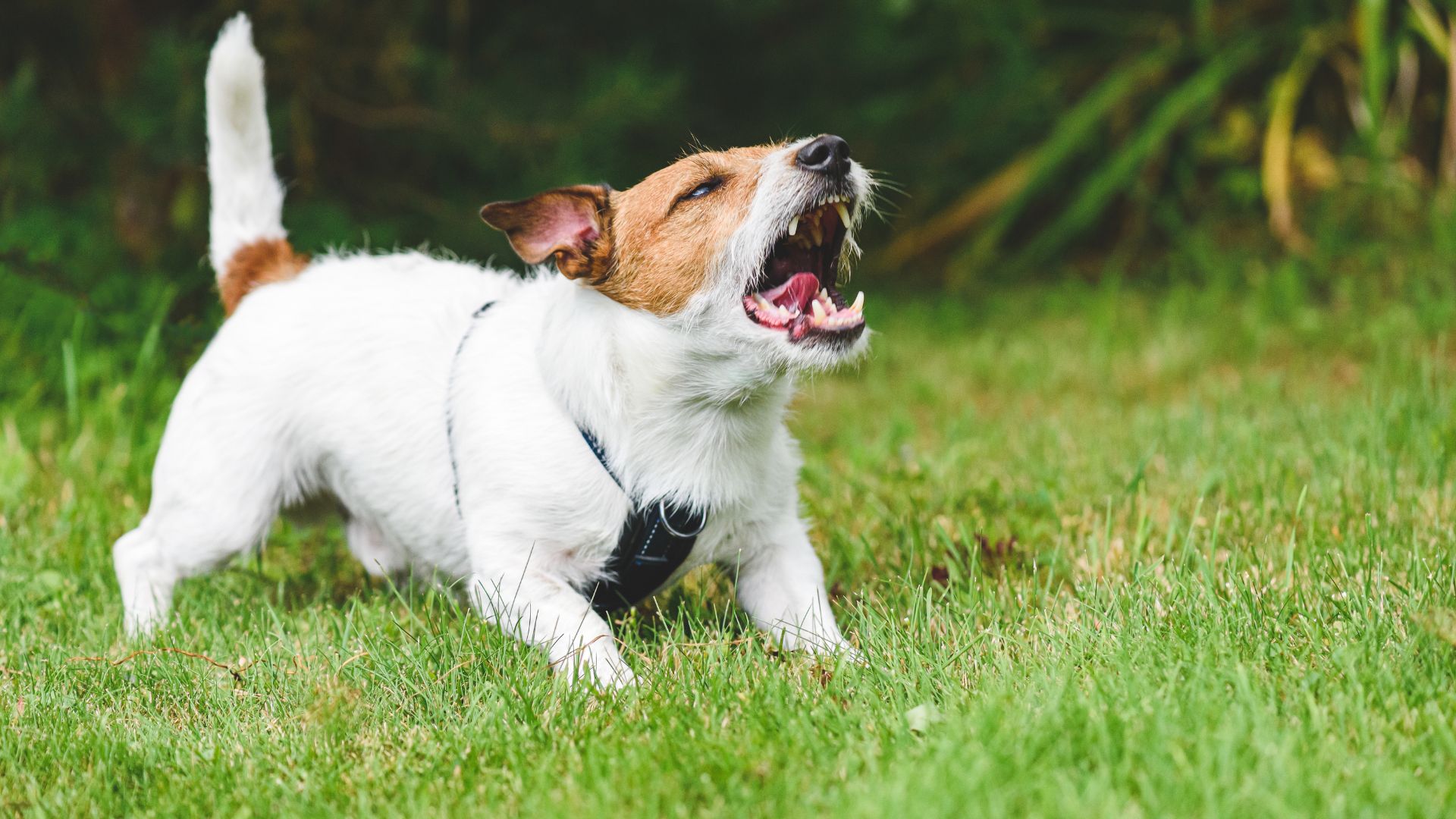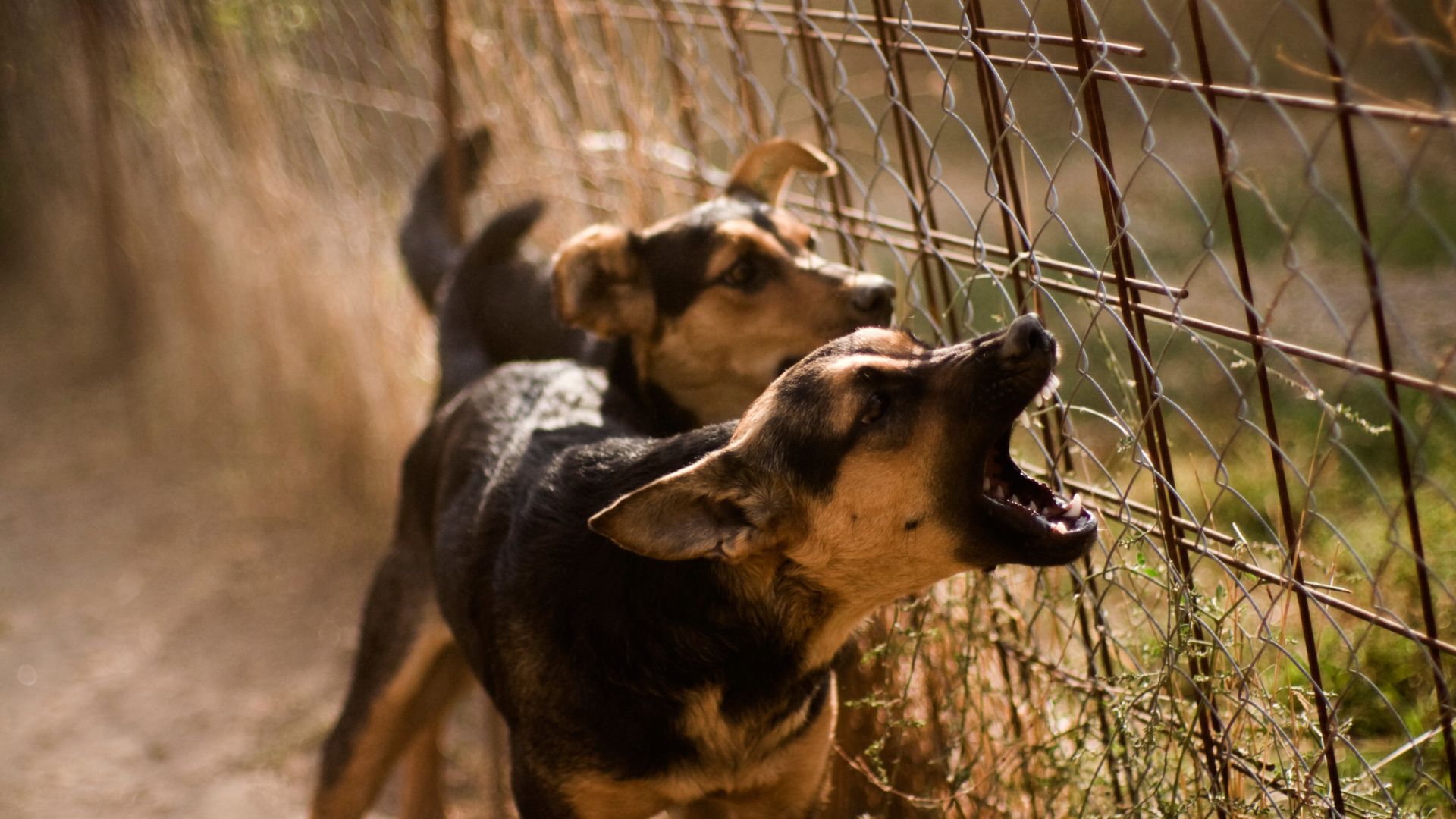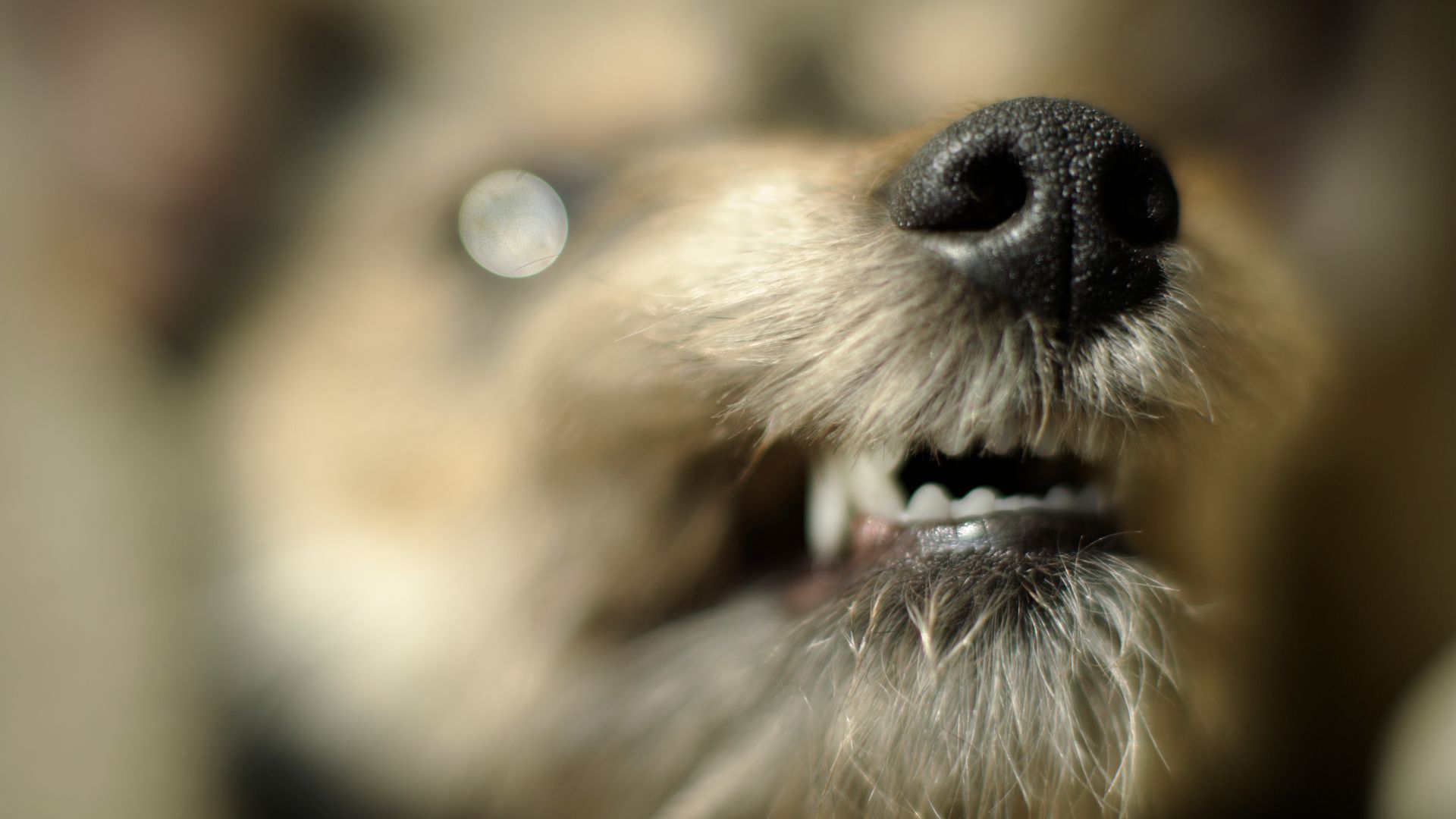
Baring teeth, growling and lunging are all signs of aggression in dogs. The same can be said for snarling, biting and ‘muzzle-punching’ other four-legged friends or humans.
Aggression in dogs can be scary – even when it’s puppy aggression – but it isn’t uncommon. You may spot aggressive behaviors in your pup around the house with their constant chewing on beloved household items even after supplying them with the best dog toys. While other aggressive behaviors, like barking or biting, could be exhibited towards other dogs while on a walk.
According to the World Health Organization, around 4.5 million dog bites occur in the United States each year. However, dogs aren’t aggressive out of nowhere. There is always an underlying cause for this level of aggression – be it out of frustration, fear or illness – and more often than not, there are warning signs.
To get to the bottom of these aggressive behaviors, decipher where they come from and learn how to nip dog aggression in the bud, we’ve consulted vet Catherine Barnette DVM. Here’s what she had to say about aggression in dogs…
What is aggression in dogs?

Dogs communicate in a variety of ways, including body language. Each tail wag, sleep position and bark is a communication method our furry friends use instead of words.
Generally speaking, dogs exhibit multiple warning signs before escalating to a form of aggression. For example, some of the most common warning signs of dog aggression include:
- A change in posture. Dogs might become stiff and tense. While others may have their chest puffed out to look bigger and more dominant.
- A change in facial expression. Whether they bare the whites of their eyes, lick their lips or bare their teeth, these are all signs of aggressive behavior.
- Use of verbal warnings. Think deep and menacing growling, snapping or constantly barking.
- Use of threatening actions. This can include lunging, nipping, striking, stalking, or mouthing.
Aggression in dogs: the causes

As we touched on, aggression in dogs isn’t something that our furry friends just pick up out of nowhere.
Instead, many possible triggers may contribute to aggressive behaviors. For example, reactivity in dogs is the general term used to describe dogs that overreact excessively in response to certain stimuli, like a person, another dog or circumstance, and it's something that's confused with dog aggression.
That's because reactivity in dogs can escalate to aggression if not dealt with and this aggression can be shown in a wide variety of contexts, or a specific set of circumstances, like when dogs feel threatened or under attack.
According to Dr. Barnette the possible triggers of aggression in dogs can be divided into five categories, including:
- Fear and anxiety
- Possessiveness
- Frustration
- Dominance
- Pain/illness
“Fear is a common cause of aggression in dogs,” Dr. Barnette says. “When your dog is scared, they have two options — run away or stick around and fight. While many dogs prefer to flee, aggression can arise if your dog feels trapped in a fear-inducing situation. Fear aggression is most common in a dog that feels cornered.”
But possessive behavior can also trigger aggression “If your dog feels strongly about protecting their food, treats, toys, resting places, home, or even family members, aggression can arise towards any person or animal that is perceived as a threat to those items," the expert continues.
All dogs have the potential to behave aggressively, however rescue dogs may exhibit these challenging behaviors more so due to past traumatic events that have often involved abuse and neglect. Therefore, training a rescue dog correctly is a vital skill for new pet parents to learn as a rescue dog that feels safe and secure is less likely to lash out.
Types of aggression in dogs
There are many types of aggression in dogs, and each has their own cause and method of rehabilitation.
- Fear aggression – a form of self defence
- Learned aggression – when a dog growling or snapping to make another dog or person back away
- Trained aggression – seen in police and protection dogs
- Maternal aggression – mothers trying to protect their pups
- Redirected aggression – happens when a dog becomes overwhelmed or highly reactive to a trigger it cannot get to, and so instead reverts to the nearest person, dog or object available
- Defence aggression – manifests itself when a dog is in a situation or place he dislikes, such as the vets
- Play aggression – listen to the tone of barking and growling and watch the body language to see if either other dog is feeling overwhelmed to determine when play fighting becomes aggression
- Territorial aggression – such as fence guarding, property guarding, people guarding or car guarding
- Resource guarding and food aggression – a big issue in rescue dogs and occurs when a dog thinks something of theirs will be taken away
- Medical aggression – your dog’s way of alerting you to a problem that you might not be able to see
- Alliance aggression
- Hormone aggression – caused by puberty or males competing for a female in heat
- Same sex aggression – most commonly seen in litter siblings or dogs that have not been neutered
- Predatory aggression
- Group aggression – more common with dog walkers or in daycare environments when a dog would not have exhibited the aggression if they were alone
- Ritualised aggression – when a dog communicates using growls, stares and stances to avoid confrontation
Aggression in dogs: what should you do?

If you've noticed warning signs in your own pup or another pooch, you might be wondering: what to do if you encounter aggressive dog behavior? It's a good question and an important one as you want to keep yourself safe, and your furry best friend.
Along with getting to the bottom of 'why' your dog is exhibiting these behaviors, you should learn how to handle aggression in dogs and this may result in you consulting professional help — especially if you need to tackle severe cases of dog aggression while out on walks and/or if your dog is difficult for you to control.
Next up, if there is aggression towards other dogs in the home, Dr. Barnette recommends taking immediate steps to keep them separated at all times to prevent further fights. “Next, talk to your vet about a referral to a veterinary behaviorist who can help you manage this problem,” the expert says.
Dog won’t stop barking? You could try teaching your dog a command that can be used to stop this barking, like teaching them to 'go to their spot', by directing your dog to lay calmly in one of the best dog beds.
Or, when your dog is barking, make every possible effort to completely ignore it, Dr. Barnette says. “When your dog stops barking, then you can look at him and give him attention," the expert adds. "Over time, most dogs will learn that barking no longer results in attention.”
What to do you if you encounter aggressive dog behavior

Found yourself in a scary situation with a dog? Try not to panic and instead, follow these tips:
- Avoid eye contact. Staring is a sign of aggression and may provoke an unwanted attack. Instead, look downward while using your still monitoring the situation.
- Avoid running. It might be your first thought to try and get as far away as possible however dogs are highly likely to give chase.
- Remain calm. This is easier said than done. But screaming or raising your voice could escalate their behavior.
Wondering how to stop puppy food aggression? We asked a vet to list their top tips. Plus, we've also got an expert-backed guide on how to stop resource guarding in dogs.







